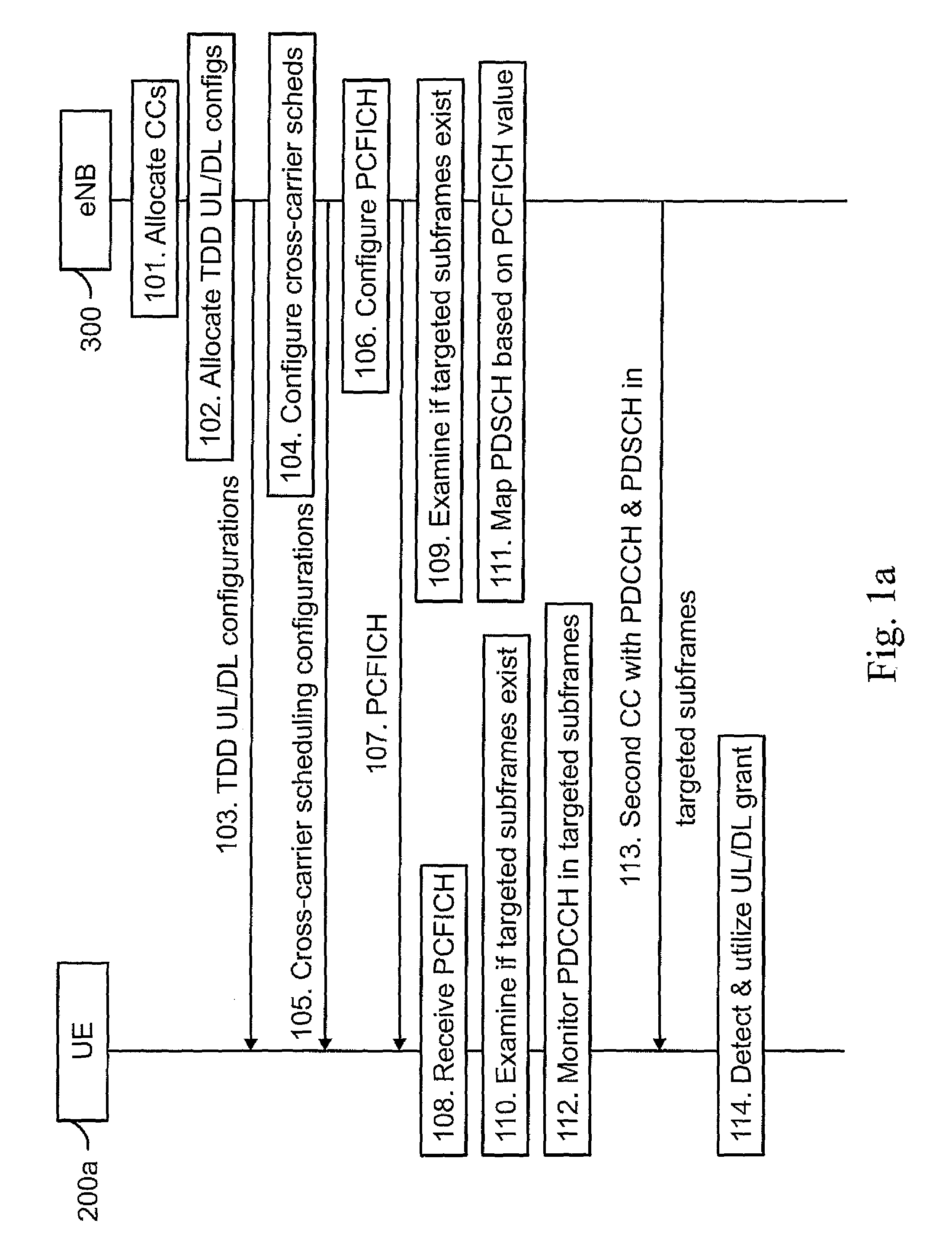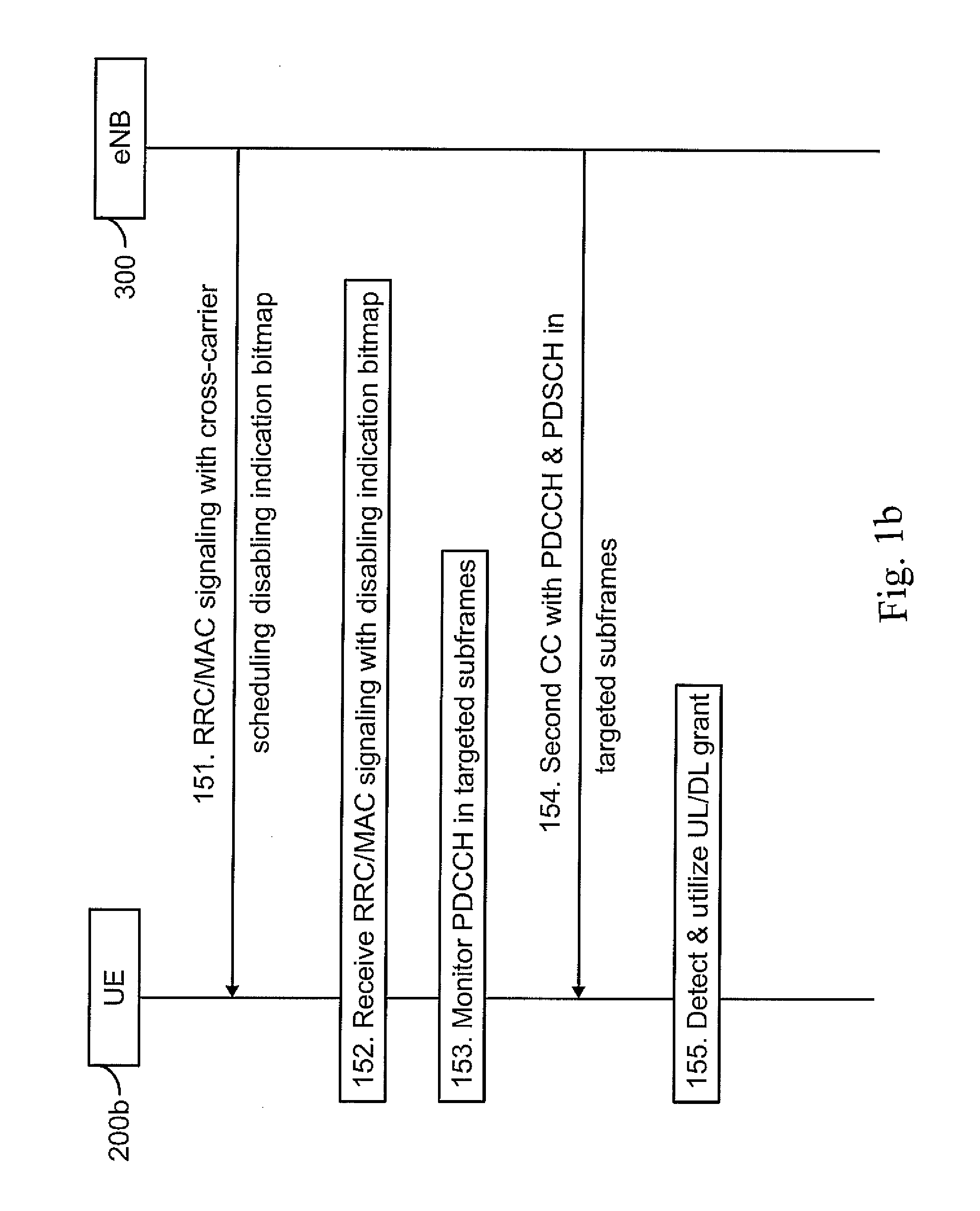Flexible Disabling/Enabling of Cross-Carrier Scheduling in Carrier-Aggregated Wireless Data Transmission
a carrier-aggregated wireless data and scheduling technology, applied in the field of mobile communications, can solve the problems of reducing scheduling gain, affecting the performance of robust control channels, and affecting the availability of physical downlink shared channel resources, and achieve the effect of flexible disabling/enabling
- Summary
- Abstract
- Description
- Claims
- Application Information
AI Technical Summary
Benefits of technology
Problems solved by technology
Method used
Image
Examples
Embodiment Construction
[0048]Reference will now be made in detail to the embodiments of the present invention, examples of which are illustrated in the accompanying drawings.
[0049]FIG. 1a is a flow diagram illustrating a method of flexible disabling / enabling of cross-carrier scheduling in carrier-aggregated wireless data transmission according to an embodiment of the invention.
[0050]At step 101, a radio network node 300 allocates component carriers to a mobile node 200a for carrier aggregated wireless data transmission. At step 102, the radio network node 300 allocates time division duplex uplink / downlink configurations for the allocated component carriers. The allocated TDD UL / DL configurations are then transmitted to the mobile node 200a, step 103.
[0051]Then, the radio network node 300 configures cross-carrier scheduling for the mobile node 200a, step 104. The configured cross-carrier scheduling configurations are transmitted to the mobile node 200a, step 105.
[0052]The radio network node 300 configures ...
PUM
 Login to View More
Login to View More Abstract
Description
Claims
Application Information
 Login to View More
Login to View More - R&D
- Intellectual Property
- Life Sciences
- Materials
- Tech Scout
- Unparalleled Data Quality
- Higher Quality Content
- 60% Fewer Hallucinations
Browse by: Latest US Patents, China's latest patents, Technical Efficacy Thesaurus, Application Domain, Technology Topic, Popular Technical Reports.
© 2025 PatSnap. All rights reserved.Legal|Privacy policy|Modern Slavery Act Transparency Statement|Sitemap|About US| Contact US: help@patsnap.com



